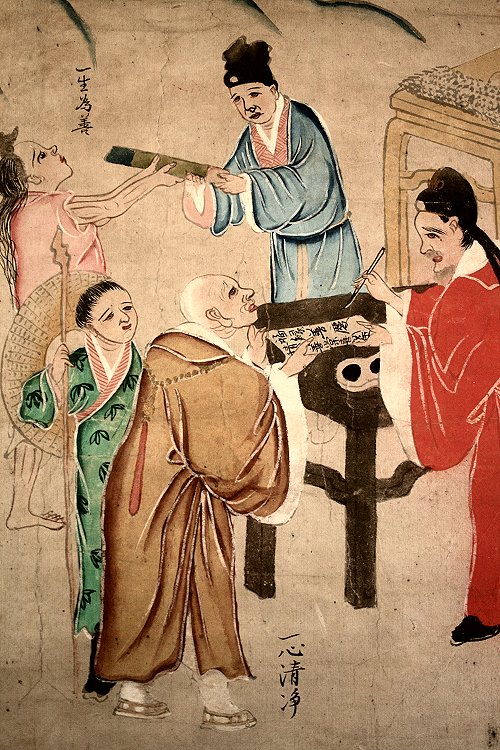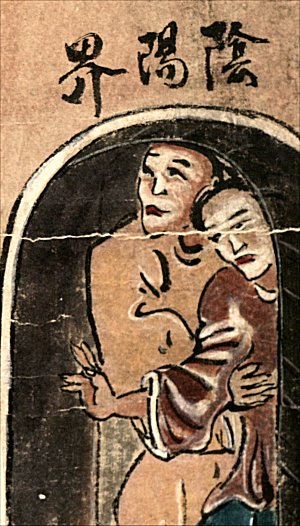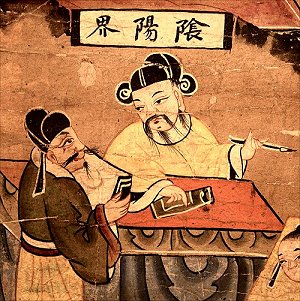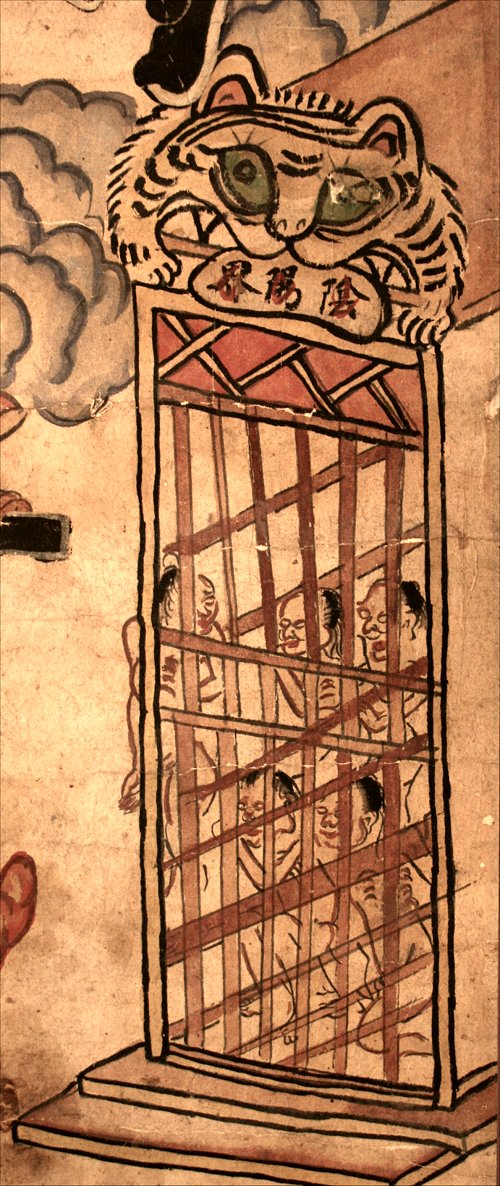
No set of hell scrolls includes every significant narrative that shapes the public imagination about hell, nor does it include every typical sinner, torture or moment of mercy. While this study collection's "A series" includes most such elements, it also lacks a few including a handful of structural components that allude to the mechanics of the afterlife. For example, other sets sometimes include a threshold between the living and the dead (see above) or a woman proffering the tea of forgetfulness (see below). This page collects typical structural components not found in the A series. (Other variances such as alternative types of torture are handled elsewhere.)
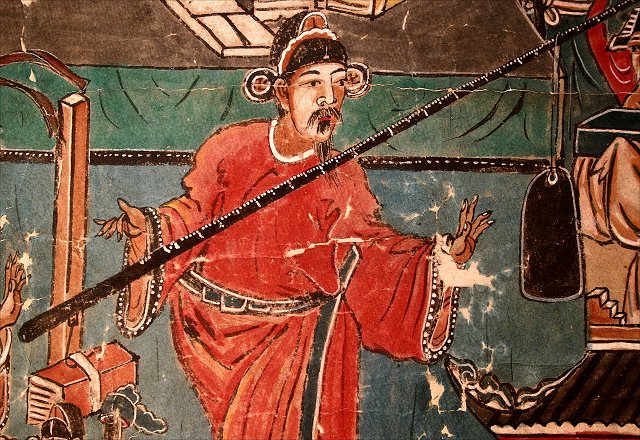
In rare cases the hell courts will weigh a person's recorded merits to determine whether they will be tortured or (as here in L10) what form of rebirth they will earn.

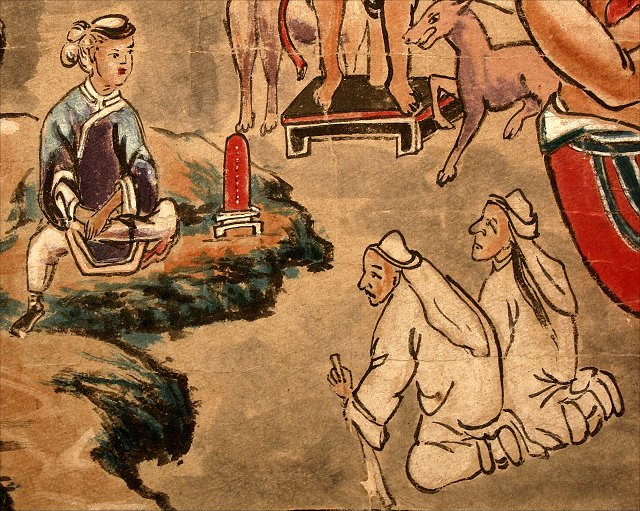
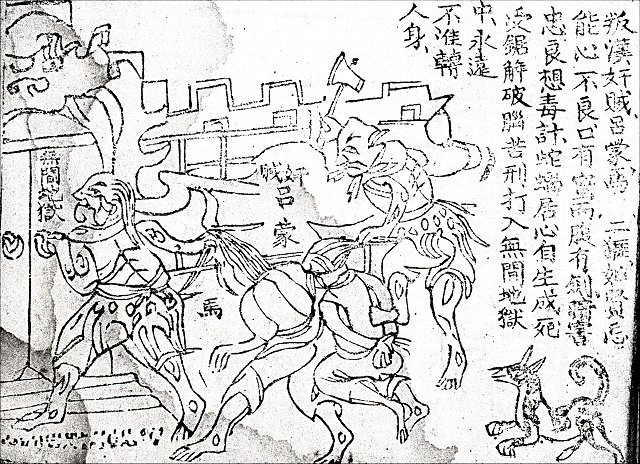
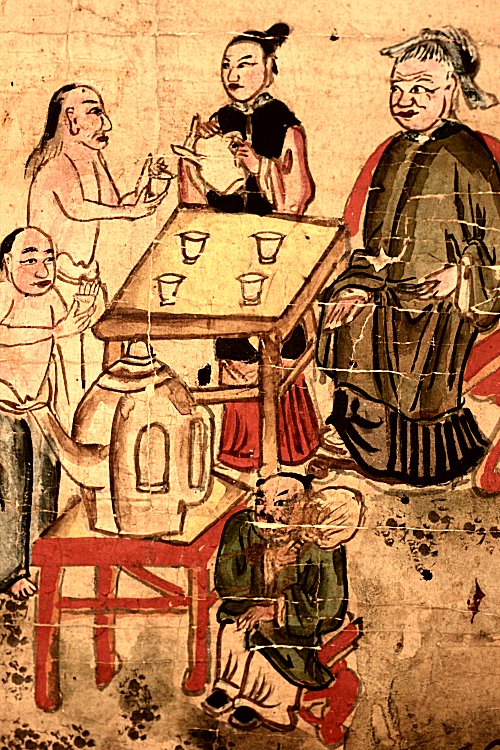
The most surprising absence in our A series is Mdm Meng's Teashop. Mdm Meng sends her attendants all over the world to gather herbs with which she brews a tea that induces loss of memory, thereby explaining why we don't remember our previous lives or being tortured between them. In this collection, her teashop is depicted in nine other scrolls, usually but not always in the last hell.
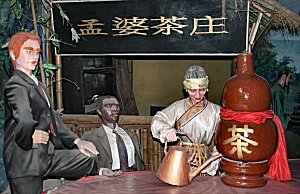
Mdm Meng serves tea at Fengdu, the City of Ghosts.
